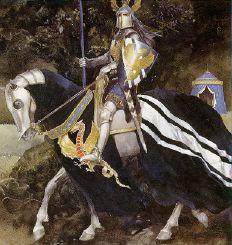The "E" in DEI stands for equity and not equality. So what's the difference?
According to the Annie E. Casey Foundation, "Equality assumes that everybody is operating at the same starting point and will face the same circumstances and challenges. Equity recognizes the shortcomings of this “one-size-fits-all” approach."
The above image is a famous example. The first image represents "equality" where each person gets one box even though the first individual doesn't even need it. The second image represents "equity" where each individual gets what he needs.
Other examples include shoe sizes and healthcare. It's better to give each person shoes that fit rather than the same size and it makes more sense to treat what's actually wrong with the patient rather than giving each patient the same treatment.
The problem with all of these examples is they assume infinite resources and everyone ending up with a satisfactory conclusion.
Let's modify the fence analogy a bit and assume that the fence represents an obstacle to success and being able to look over the fence represents overcoming the obstacle and achieving success. Let's also assume that the boxes represent an investment in resources such as education and training.
Realistically no one can succeed without some investment in resources so let's modify the first picture to show all three individuals blocked by the fence and each needing one, two and three boxes respectively to see over it.
Equality would be giving each person one box. That would allow only one person, the tallest, to succeed. Therefore we would get one success at a cost of three boxes.
If we gave each individual what they needed to succeed it would cost six boxes and we would get three successes. Each success would now cost only two boxes but we would need twice the resources.
Now let's consider what the height of the individuals in the example represents. It would seem the taller an individual is then the fewer resources are required for him to succeed so perhaps height represents talent or aptitude.
Well, if we were to search out three tall individuals, and give each of them one box, then we would get three successes for three boxes or one success per box. Alternatively we could give the tallest one box, the medium height individual two boxes, and the shortest individual none and get two successes for our three boxes.
This is a strategic allocation of resources intended to maximize return on investment,
This is what we used to do. We would use testing and interviews to find candidates that had the highest probability to succeed for the fewest resources. I'm not sure why we stopped doing this. No one has a right to demand a greater resource investment because they are less likely to succeed.
Certainly no one has the right to demand that resources be taken away from someone else so they can succeed.


No comments:
Post a Comment